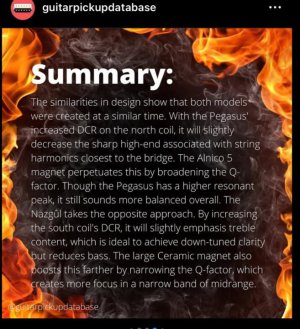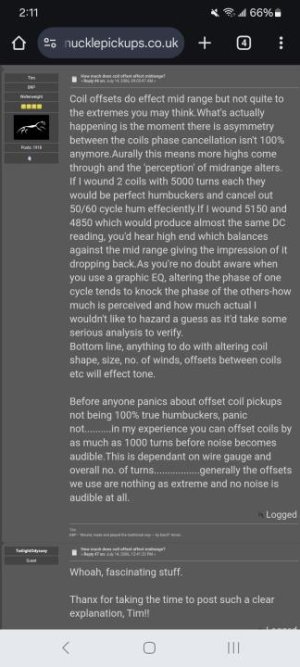Rex_Rocker
Well-known member
I know the common statement is that no Duncan has asymmetrical coils other than the 'Hybrid and some CS offerings like the Dyad and the Fuglybucker.
However, I came across these analyses on the Jazz, Full Shred, Nazgul, and Pegasus.
https://www.instagram.com/p/Cg5W0swO8l4
https://www.instagram.com/p/ChIspOLurlZ
Those values seem to fall within the 10% tolerance that Duncans have, but he does show visually the coils look unbalanced. That channel/profile/whatever seems to have pretty solid analyses that make a lot of sense to me too.
So... what do you all think?
However, I came across these analyses on the Jazz, Full Shred, Nazgul, and Pegasus.
https://www.instagram.com/p/Cg5W0swO8l4
https://www.instagram.com/p/ChIspOLurlZ
Those values seem to fall within the 10% tolerance that Duncans have, but he does show visually the coils look unbalanced. That channel/profile/whatever seems to have pretty solid analyses that make a lot of sense to me too.
So... what do you all think?


